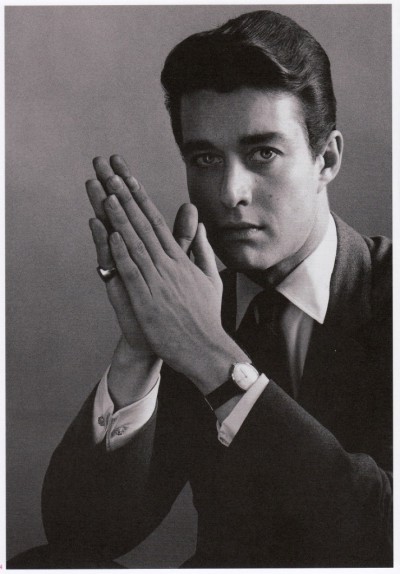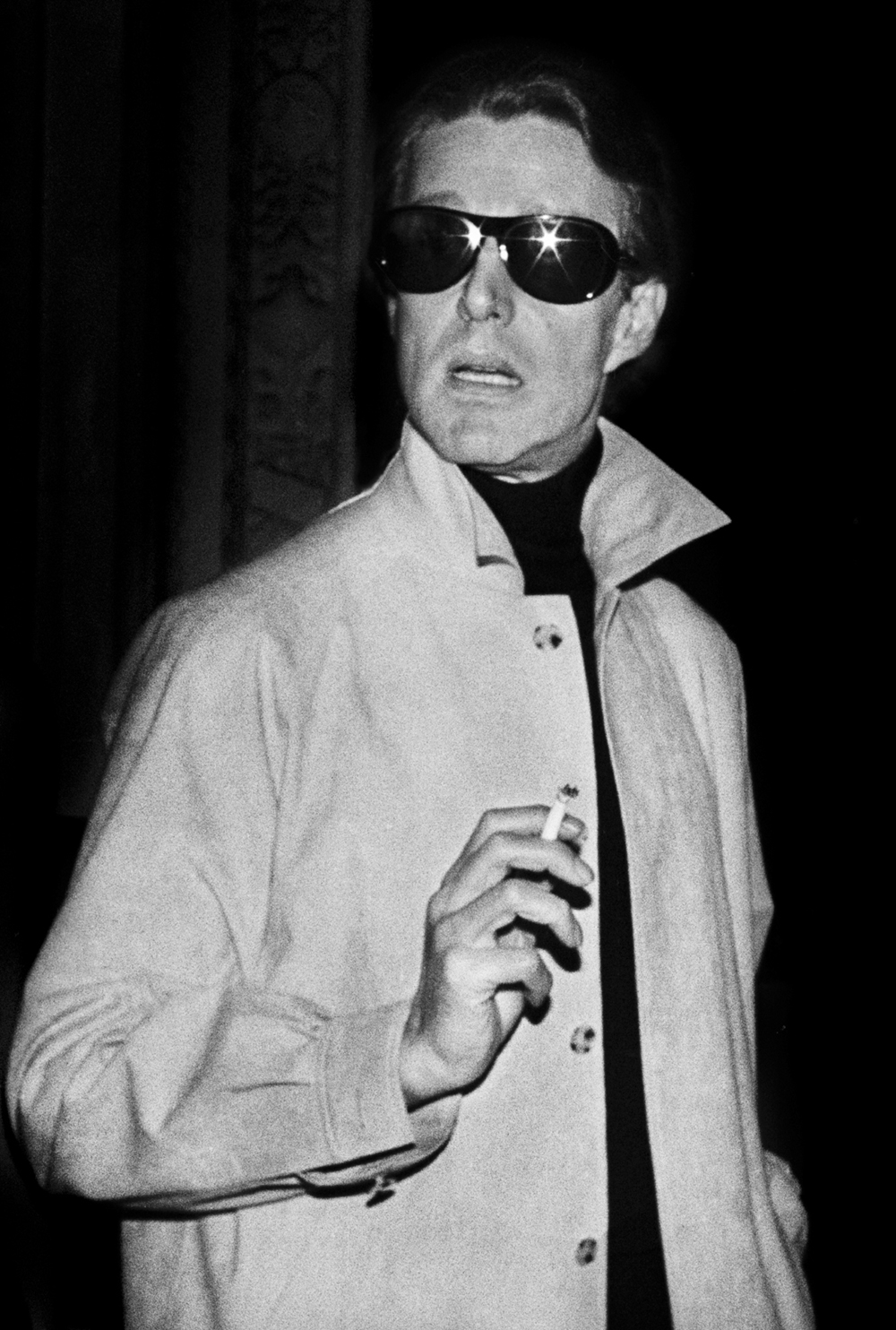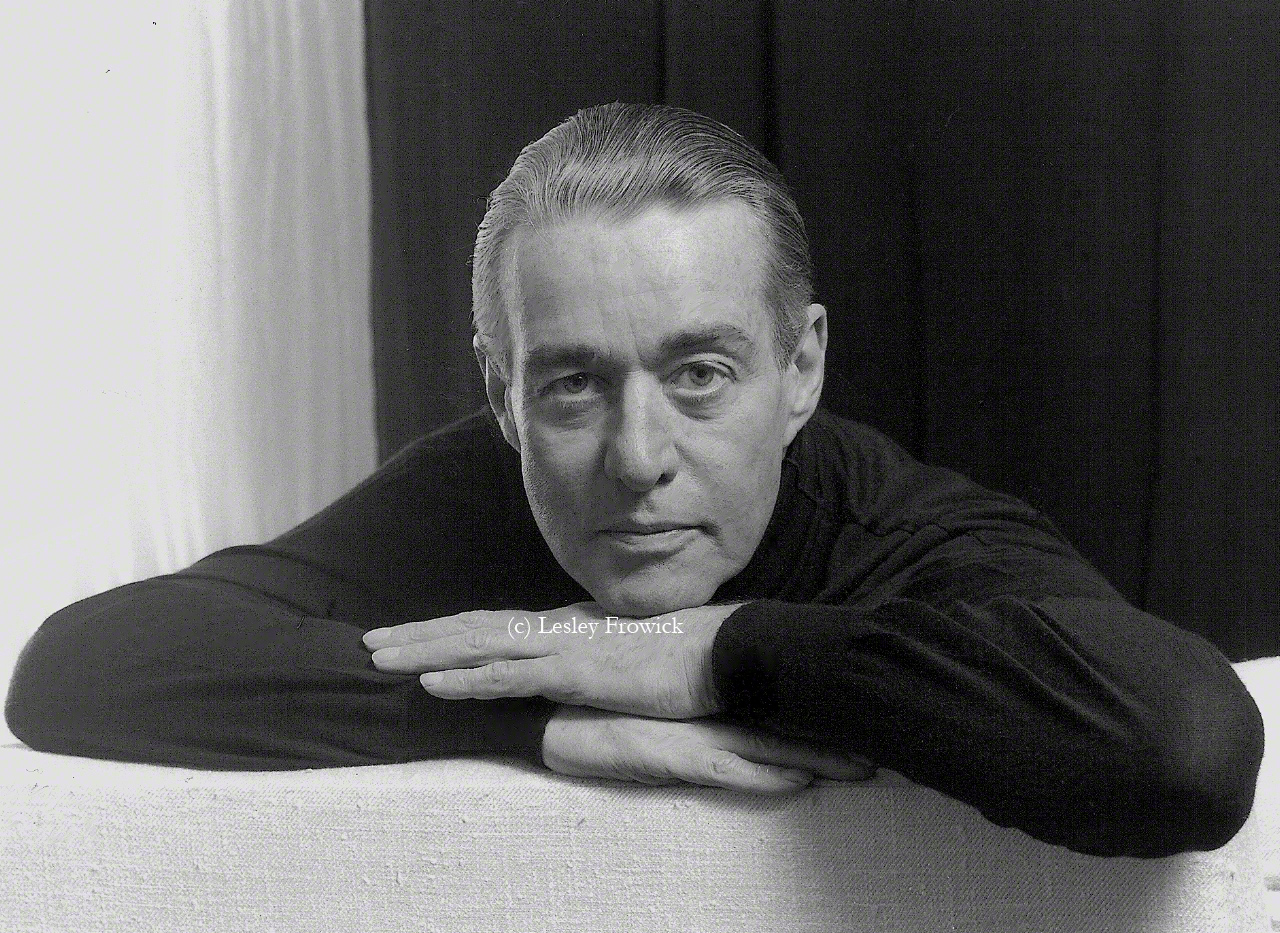Halston (Roy Halston Frowick)

Roy Halston Frowick was born on April 23, 1932 in Des Moines, Iowa, the second son of a Norwegian-American accountant James and his seamstress wife Hallie. Halston developed an interest in sewing from his mother, and he began creating hats and altering clothes for his mother and sister as a boy. He graduated Benjamin Bosse High School in Evansville, Indiana, in 1950, then attended Indiana University before enrolling at the School of the Art Institute of Chicago. In 1952, Halston moved to Chicago, where he enrolled in a night course at the School of the Art Institute of Chicago and he worked as a window dresser. In 1953, he opened his own hat business. His first customer was radio actress and comedian Fran Allison. Halston’s hats were also bought by Kim Novak, Gloria Swanson, Deborah Kerr and Hedda Hopper. Halston’s first big break came when the Chicago Daily News ran a brief story on his fashionable hats. In 1957, he opened his first shop, the Boulevard Salon, on North Michigan Avenue. It was at this point that he began to use his middle name as his professional moniker. During his childhood he had been referred to as Halston to distinguish between himself and his uncle Roy. Halston moved to New York City in late 1957, first working for milliner Lilly Daché. Within a year, he had been named the co-designer at Daché, became acquainted with several fashion editors and publishers, and left Daché’s studio to become head milliner for department store Bergdorf Goodman in their customer milliner salon.
Halston achieved great fame after designing the pillbox hat Jacqueline Kennedy wore to her husband’s presidential inauguration in 1961, and when he moved to designing women’s wear, Newsweek dubbed him “the premier fashion designer of all America.” When hats fell out of fashion, Halston moved on to designing clothing, this was made possible by Estelle Marsh, a Texas millionairess from Amarillo, Texas. Mrs. Marsh was his sole financial backer during this critical time of development. He opened his first boutique on Madison Avenue in 1968. The collection that year included a dark jade velvet wedding gown for advertising executive Mary Wells Lawrence. Lawrence was married to the CEO of Braniff International Airways, Harding Lawrence. She would be instrumental in bringing Halston to Braniff in 1976 to design Braniff’s Hostess, pilot, ticket agent, and ground personnel uniforms. Halston launched his first ready-to-wear line, Halston Limited, in 1969. His designs were a departure from the clothing that had been popular in the 1960s; Halston’s designs focused on comfortable clothing (shirtdresses and straplesses chiffon gowns) that were flattering to almost any figure and made in cashmere or ultrasuede (a fabric which he became known for). Halston’s goal was to simplify or “clean up” fashion. He later told Vogue that he got rid of “…all of the extra details that didn’t work—bows that didn’t tie, buttons that didn’t button, zippers that didn’t zip, wrap dresses that didn’t wrap. I’ve always hated things that don’t work.”
Halston’s boutique drew celebrity clients like Babe Paley, Anjelica Huston, Gene Tierney, Lauren Bacall, Margaux Hemingway, Elizabeth Taylor, Bianca Jagger and Liza Minnelli (both Jagger and Minnelli would become close friends). From 1968 to 1973, his line earned an estimated $30 million. In 1973, Halston sold his line to Norton Simon, Inc. for $16 million but remained its principal designer. This afforded him creative control with near unlimited financial backing. In 1975, Max Factor released Halston’s first namesake fragrance for women. By 1977, sales from the perfume had generated $85 million in sales. Throughout the 1970s, Halston had expanded his line to include menswear, luggage, handbags, lingerie and bedding. Vogue later noted that Halston was responsible for popularizing caftans (which he made for Jacqueline Kennedy), matte jersey halter top dresses and introduced polyurethane into American fashion. Halston was very influential in the design of uniforms. In 1977 he was contracted by Braniff International Airways to create a new look for their flight attendants. The muted browns, with distinctive “H” logo were a world away from the more flamboyant past uniform designs by Emilio Pucci. Halston created interchangeable separates in shades of bone, tan and taupe which the airline extended to the seat covers, using brown Argentinean leather. The entire scheme was dubbed “Ultra Touch” by the airline in reference to Halston’s ultrasuede designs and was extremely evocative of the late 1970s. An elaborate party was thrown in February, 1977, dubbed Three Nights In Acapulco, to introduce the new Halston fashions along with the new and elegant Braniff International Airways.
Braniff Chairman Harding Lawrence his wife Mary Wells Lawrence, First Lady Lady Bird Johnson, and Halston himself along with his Halstonettes were in attendance for the grand presentation. Halston and his entourage would arrive at selected points during the party, late, of course, in stylish outfits that matched the deep tones of Braniff Airway’s new color schemes that would be applied to their aircraft as part of the new so called Elegance Campaign. The party and the Halston creations were a hit not only with the fashion press but also with Braniff employees who thought they were the easiest and most comfortable uniforms they had ever worn. He was asked by the U.S. Olympic Committee to design the Pan American Games and U.S. Olympic Team’s uniforms in 1976. He also designed the uniforms for the Girl Scouts, the New York Police Department, and the Avis Rent a Car System.
In 1983, Halston signed a six-year licensing deal, worth a reported $1 billion, with the retail chain J.C. Penney. The line, called Halston III, consisted of affordable clothing, accessories, cosmetics and perfumes ranging from $24 to $200. At the time, the move was considered controversial as no other high end designer had ever licensed their designs to a mid-priced chain retail store. While Halston was excited about the deal and felt that the it would only expand his brand, the deal damaged his image with high end fashion retailers who felt that his name had been “cheapened”. Bergdorf Goodman dropped his Halston Limited line from their stores shortly after plans for Halston III were announced. The Halston III line for J.C. Penney was poorly received and was eventually discontinued. In 1983, Halston Limited, which was owned by Norton Simon, Inc., was acquired by the Esmark Inc. After the acquisition, Halston began to lose control over his namesake company and grew frustrated. As the label changed hands (it would be owned by Playtex International, Beatrice Foods and four other companies), Halston continued to lose control and, by 1984, was banned from creating designs for Halston Limited. He attempted to buy back his company but failed. Halston Enterprises was eventually acquired by Revlon in 1986. Halston was paid a salary by Revlon but had stopped designing clothing in 1984. After his contract with Revlon expired, he was in talks to sign a new contract with the company but stopped negotiations after he learned that Revlon planned to continue the line without his input. The line continued on with various designers until 1990 when Revlon discontinued the clothing portion of the line but continued selling Halston perfumes.
Born
- April, 23, 1932
- USA
- Des Moines, Iowa
Died
- March, 26, 1990
- USA
- San Francisco, California
Cause of Death
- Kaposi's sarcoma
Other
- Cremated



